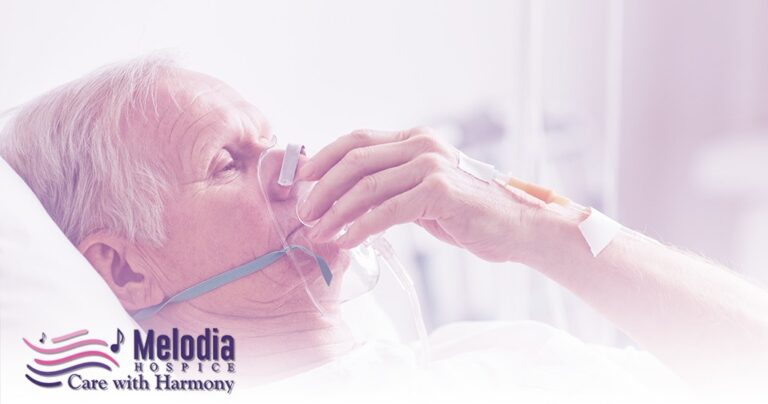End Of Life Care In Concord City, California
Comfort care is an integral component of end-of-life medical treatment. Care assists or comforts a dying person. The aims are to alleviate or avoid as much suffering as possible and increase the quality of life while honouring the dying person’s preferences. Most likely, you’re reading this because someone close to you is dying. You’re intrigued by what’s going to happen. You’re curious about how to console, what to say and what to do. You may be interested in learning how to make the process of dying easier — how to help ensure a peaceful death with treatment customised to the desires of the dying person. To various people, a peaceful death may mean different things. For example, your sister may want to know when the end is near, so she may say her final goodbyes to those she loves and attend to personal matters. Your husband may choose to die quickly rather than suffer. Perhaps your mother has stated that she prefers to die at home, while your father likes to die in a hospital where he can get treatment for his sickness until the very end.
What Is End Of Life Care?
Each narrative is unique towards the end of life. Death can occur quickly or it might happen gradually. Some older adults’ bodies deteriorate but their minds stay keen. Others remain physically well but the cognitive decline has a significant impact even though everyone dies; each loss is felt uniquely by those close to the departed. End-of-life care refers to the support offered in the days and weeks preceding death. Such care does not occur solely in the seconds before the heart stops pumping and breathing stops. Older adults typically have one or more chronic conditions that need significant consideration in the days, weeks and even months before death.
Providing Physical Comfort
Some procedures may be used to make a dying person more comfortable. A variety of conditions might cause discomfort. There are things you or a healthcare professional can do, depending on the reason. A dying person, for example, may feel unsettled because of:
- Pain
- Asthma
- Itching
- Temperature sensitivity
- Digestive problems
- Fatigue
Pain

It’s bad enough to see the death of someone you care about but knowing that person is also in pain makes it even more difficult. Although not everyone who is dying is in excruciating pain, you may do things to help someone who is. Experts believe that dying patient should prioritize relieving suffering above long-term difficulties such as drug addiction or misuse. Don’t be scared to provide as much pain medication as the doctor has prescribed Pain is simpler to avoid than treating and managing severe pain is brutal. Attempt to keep the amount of discomfort from exceeding the capacity of pain-relieving medications.
Breathing Problems

A common end-of-life symptom is shortness of breath or the impression that breathing is difficult. A doctor may refer to this as dyspnoea. Worrying about the next breath might make it challenging to engage in vital conversations or form connections. Raising the head of the bed, opening a window, using a humidifier or having a fan circulate air in the room are all options. Morphine and other pain medicines can occasionally help with shortness of breath. People on the edge of death may breathe loudly, sometimes referred to as a death rattle. This is caused by either a fluid build-up in the throat or a relaxation of the throat muscles. It may be beneficial to try turning the individual to lay on one side.
There is also medication that may be provided to aid with this. A death rattle accompanies not all loud breathing. It may be reassuring to know that this noisy breathing is usually not bothersome to the dying person, even if it distresses family and friends.
Skin Irritation

Skin disorders may be excruciatingly painful. Because skin naturally grows drier and more brittle with age, it is essential to take additional care of an older adult’s skin. Dry skin can be relieved and soothed by gently applying alcohol-free lotion. Dryness on the lips and eyelids, for example, can be a typical source of Pain when approaching death. A lip balm might help prevent symptoms from worsening. In addition, a moist towel put over closed eyelids may provide relief from dryness. If the inside of the mouth seems dry, provide an ice chip (if the subject is conscious) or wipe it with a wet cloth, cotton ball or specially prepared swab.
Digestive Problems

Nausea, vomiting, constipation and loss of appetite are all common concerns at the end of life. Consult a doctor or nurse as soon as possible because the causes and treatments for these symptoms differ. Some drugs help reduce nausea and vomiting and ease constipation, which is a typical side effect of severe pain relievers. It is not necessary to push someone to eat. Going without food and drink is uncomfortable but eating might make things worse. Losing one’s appetite is a frequent and natural component of the dying process. Swallowing may also be an issue, particularly for persons who have dementia. An intentional decision to abstain from food might be part of a person’s realization that death is on the horizon.
Temperature Sensitivity

People who are dying may not tell you if they are too hot or cold, so watch for clues. Someone hot, for example, may repeatedly seek to remove a blanket. Remove the veil and cover their head with a cool cloth. If a person is hunching their shoulders, pulling up the covers or shivering, it might be a sign of being chilly. Check for draughts, turn up the heat, and add a blanket. Electric blankets should be avoided since they might become overly hot.
Fatigue

People nearing the end of their life are more likely to feel tired and have little or no energy. Maintain a straightforward approach. Instead of walking to the bathroom, a bedside commode can be utilized. A shower stool, as well as sponging off in bed, can help conserve energy.
Managing Mental & Emotional Needs

Assisting the dying individual in coping with mental and emotional pain is also part of complete end-of-life care. Someone reaching the end of their life may be understandably dissatisfied or terrified. It is critical to address emotional anguish and suffering. Encouragement of inspirational dialogues may be beneficial. You should consult with a counsellor, especially one who is familiar with end-of-life issues. If the sadness or anxiety is severe, medication may be prescribed. A dying individual may have distinct worries and concerns as well. They may be afraid of the unknown or concerned about those left behind. Some individuals are terrified of being alone at the end. This pain may be exacerbated by the understandable feelings of family, friends and even medical experts. For example, they may refrain from visiting when relatives and friends are unsure how to assist or what to say. Someone who is already in the midst of grief may withdraw.
If doctors are unable to heal their patients, they may feel powerless. Some people appear to avoid dying patients. This might aggravate a dying person’s loneliness. If this occurs, express your concerns with family, friends or your doctor. A simple act of physical contact, such as holding hands, a touch or a gentle massage, can help a person feel more connected to those they care about. It might be pretty calming.
Spiritual Needs At The End Of Life

People reaching the end of their lives may have spiritual as well as physical demands. Finding purpose in one’s life and if possible, resolving problems with others are examples of spiritual care. Resolving unresolved difficulties with friends or family may help the dying person find peace. Visits from a social worker or a counsellor may be helpful as well. Many people find solace in their religious convictions. Others may be torn about their religious or spiritual beliefs. Praying, talking with a member of one’s religious group (such as a minister, priest, rabbi, or imam), reading religious literature or listening to sacred music can all bring comfort.
Family and friends may talk about the significance of their relationship with the dying person. Adult children, for example, might discuss how their father affected the direction of their life. Grandchildren can express how much their grandfather means to them. Another technique for some people to feel calm near death is to share recollections of happy moments. This can be reassuring to everyone. Some doctors believe that even if a patient is asleep, they may be able to hear. It is generally never too late to express yourself or share pleasant experiences.
Conclusion
The end-of-life process encompasses all aspects of death and palliative treatment for terminally ill patients. The nursing literature agrees that nurses must guide patients through this process while also alleviating pain and physical discomfort. People are surrounded by death. Thus it is essential to discuss what might happen at the end of life and cope with this issue. It is necessary for doctors who deal with the problem daily.
You can reach us at any time of day or night by contacting us through our 24/7 online customer support chat or by calling 1-888 635-6347 (MELODI-7).
